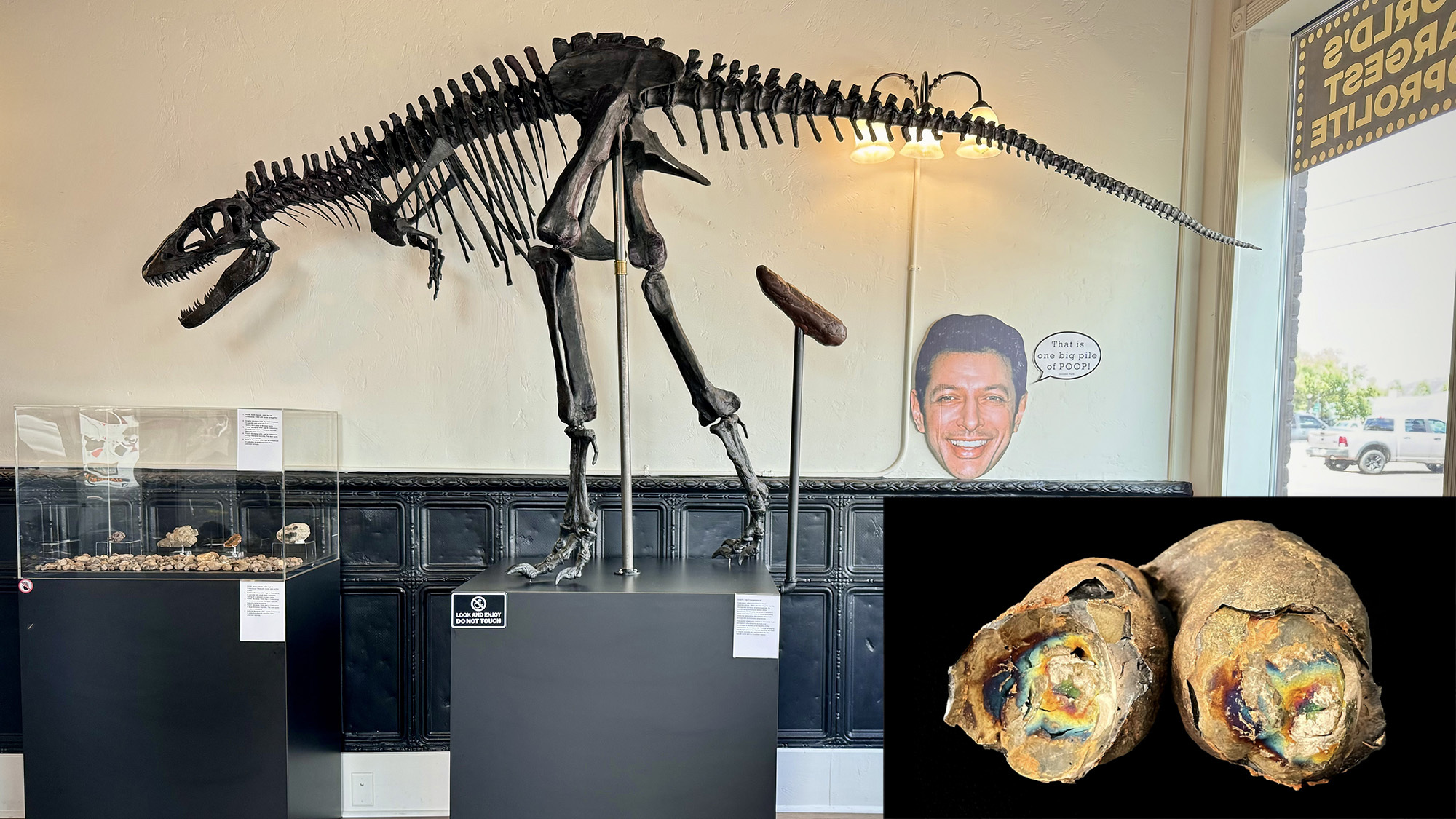

Chicago’s Field Museum has Sue the gigantic Tyrannosaurus rex. The Wyoming Dinosaur Center has a 106-foot Supersaurus named Jimbo. The Poozeum in Williams, Arizona has poop–fossilized poop from dinosaurs, sharks, and more. The museum that first opened in May 2024 near the Grand Canyon is home to over 7,000 fecal specimens called coprolites from several different species, including the famed T. rex.
The Poozeum and all of its specimens were collected by George Frandsen, who found his first coprolite while shopping in Moab, Utah during college.
[Related: Rare parasites found in 200 million-year-old reptile poop.]
“I went to a rock and fossil shop, found this thing in the cabinet that looked like a poo,” Frandsen tells Popular Science. “For me, it was just all in one–funny, gross, educational, and fascinating. I was 18 and I just thought it was amazing. So, that’s what kicked it off.”
This single piece of very old poop would later turn into a very large collection of coprolites. Fossilized poop can generally be found anywhere, especially in areas with lots of vertebrate fossils. Not surprisingly, they generally look like poop, with some distinct layers, segments, and eventually coming to a point. They also have inclusions–the bones, scales, teeth, and plant matter that sometimes show up on the surface. While many are brown, some boast rainbow iridescent colors.

Frandsen has coprolites from all around the world–Montana, Florida, the United Kingdom, France, Morocco, Russia, and more. Formally trained as an archeologist and anthropologist, but a former English teacher and healthcare securities and logistics executive by day, he never let his passion for finding coprolites die.
Frandsen kept tabs on the research regarding coprolites, while learning how to find them in the field. About 10 years ago, Frandsen noticed that there was a lack of publicly available information on feces and coprolites and started a website called Poozeum that featured his collection to make it accessible to scientists and the general public.
“I used my collection to, kind of, host comparative analysis. There were games, videos, and academic papers that the public could actually access,” says Frandsen. “You could go there, and you wouldn’t have to go through the web of an academic setting to get there.”

In 2024, Frandsen made a big career pivot and officially opened his brick and mortar Poozeum in Williams, Arizona. The town itself is a fitting spot for a museum of this caliber. It sits on historic Route 66 and is known for Wild West shows, wildlife attractions, and a railway that runs into Grand Canyon National Park. A museum of fossil poop fits right in.
One of the crown jewels is a specimen that holds a Guinness World Record as largest coprolite left by a carnivorous animal–more than two feet long and over 6 inches wide. Nicknamed “Barnum,” the specimen was discovered in 2019 in South Dakota and is believed to be the fossilized T. rex poop.

“Barnum is filled with these bone chunks and was tested and shows high levels of phosphates and calcium, which don’t really occur naturally, but in coprolites they do well,” says Frandsen. “There was no other animal in that area at that time that could make a poo that large.”
Other specimens–like petrified wood with termite poop inside–require magnification to identify. The collection is also not exclusive to terrestrial animals. Visitors can see prehistoric shark poop that are shaped like their spiral intestines and full of the scales that once belonged to the other marine animals they consumed. The Poozeum is also home to fossilized farts, entombed in amber like the mosquito in Jurassic Park.
“They are these pieces of Baltic amber with little bugs that are trapped inside,” says Frandsen. “Millions of years ago, these bugs got trapped in the tree sap. They got covered and their body released gas, probably because the bacteria started to expand when they died and it came out the back. Well, it got stuck, because the sap was so thick, it got stuck right at their butt.”

Frandsen plans to keep searching for more poop to add to the collection when the museum is closed during the slower winter months. He also hopes that it can spur conversations not only about paleontology, but some still taboo bathroom topics.
“You go in and there’s this dinosaur on a toilet and families can talk about it openly and laugh and joke about all these things that have to do with digestion,” says Frandsen. “So maybe someday, somebody with a gastrointestinal illness won’t be afraid to talk about it, maybe because they saw it in a funny light and can be more open about it.”
